Starlink Launch First 6 LEO Broadband Satellites for Mobile Service
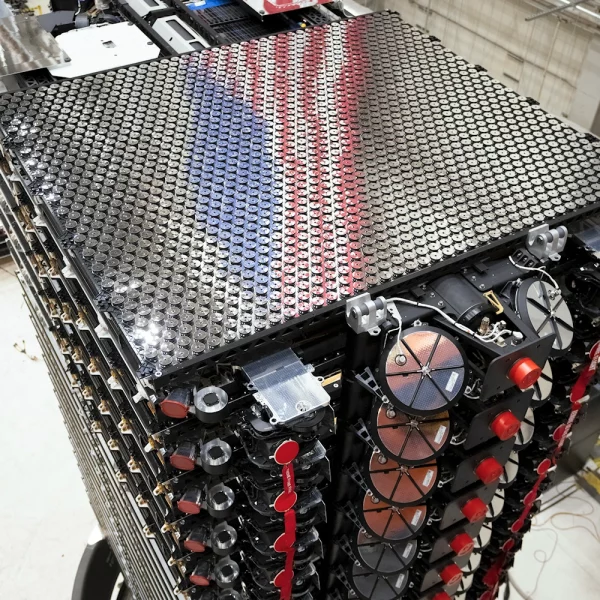
SpaceX has moved a step closer to introducing a global 4G mobile service via Starlink‘s mega constellation of ultrafast broadband satellites in Low Earth Orbit (LEO), which occurred after the company successfully launched its first six satellites with support for their new ‘Direct to Cell’ product this week.
The Starlink network currently has around 5,289 LEO satellites in orbit around the Earth (altitude of c. 500km+) and they have approval to add roughly 7,500 more by the end of 2027. Customers in the UK pay from £75 a month, plus £449 for the regular home kit (standard dish, router etc.) and £20 for shipping on the ‘Standard’ package, which promises fast latency times of 25-50ms, downloads of c. 25-100Mbps and uploads of c. 5-10Mbps.
However, in 2022 the space firm signed the starting gun on a new agreement (here and here), which will enable them to launch a global space-based 4G mobile network – called Direct to Cell – to connect with regular unmodified Smartphones on the ground. Satellites with this capability have an advanced eNodeB modem onboard that acts like a cellphone tower in space, allowing network integration similar to a standard roaming partner.
Advertisement
At the time, the company proposed to launch their first beta test product in select areas of the USA by the end of 2023 (i.e. continental US, Hawaii, parts of Alaska, Puerto Rico and their territorial water), which is being supported by mobile operator T-Mobile. But this is running a little behind schedule because SpaceX has only this week launched the first batch of 6 Direct to Cell capable Starlinks, which were lofted alongside a batch of 15 other Starlink birds aboard a Falcon 9 rocket.
SpaceX envisages that the testing phase will eventually involve 840 satellites transmitting 4G mobile to around 2,000 unmodified Smartphones on the ground. According to the company’s website, the plan is still to launch a basic TEXT (i.e. SMS, MMS and “participating messaging apps“) service sometime in 2024, while the ability to make calls (voice) and use a slow mobile broadband (data) link won’t follow until sometime in 2025.
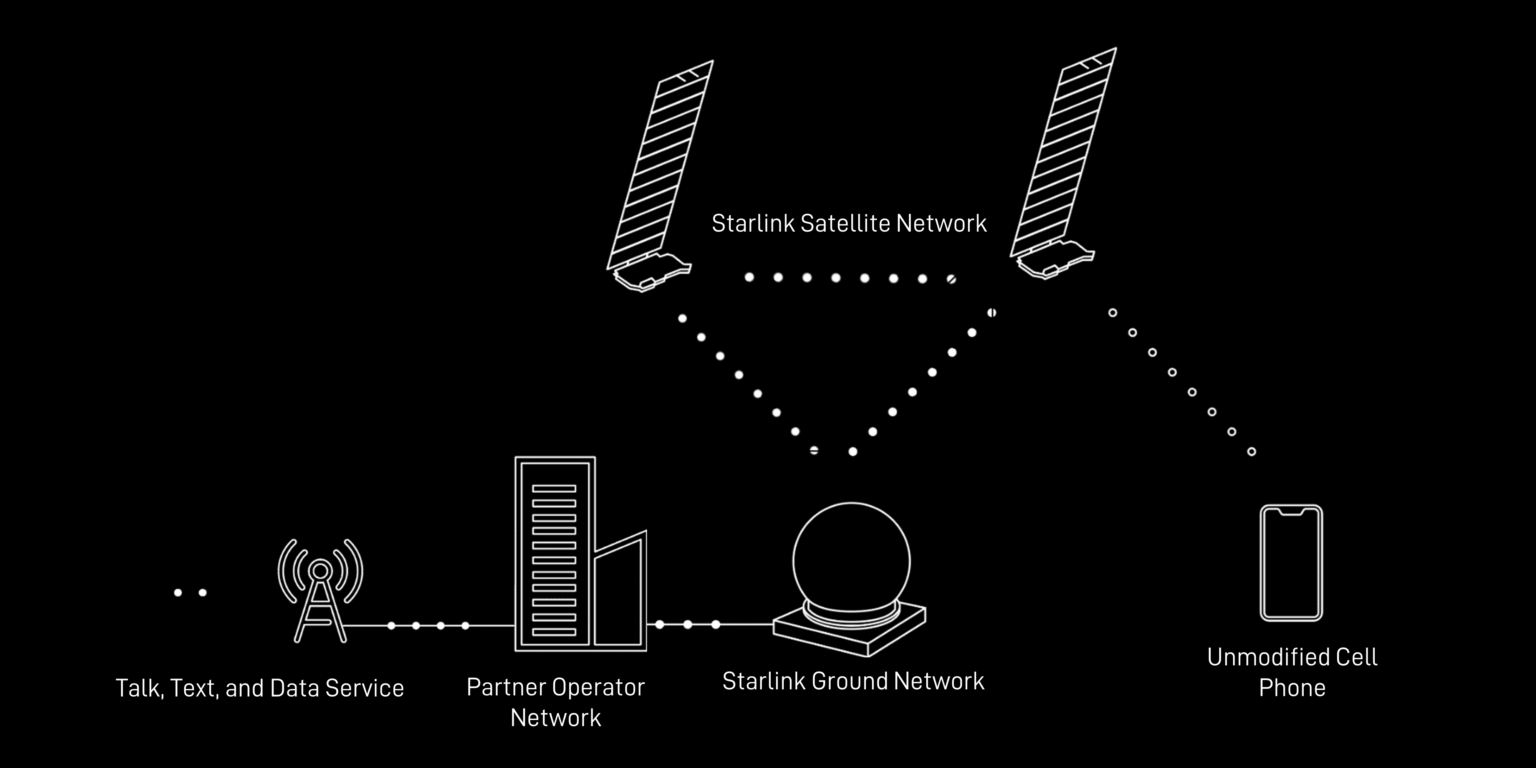
The ability to connect to Internet of Things (IoT) devices also won’t follow until sometime in 2025. In addition, Starlink doesn’t yet have supporting access agreements for this service with cellular providers in every country, although hopefully we’ll soon learn which operator might support it in the UK. But Vodafone and EE (BT) seem like fair bets, since both have experience working with satellite solutions and are testing rival systems.
Advertisement
Starlink’s Global Direct to Cell Partners
T-Mobile (USA)
Optus (Australia)
Rogers (Canada)
One NZ (New Zealand)
KDDI (Japan)
Salt (Switzerland)
ENTEL (CHILE)
Entel (PERU)
But Elon Musk has cautioned (here) that the first Direct to Cell capable Starlinks can only support data speeds of “~7Mb per beam and the beams are very big, so while this is a great solution for locations with no cellular connectivity, it is not meaningfully competitive with existing terrestrial cellular networks.”
Related documents released last year revealed that the Direct to Cell system will be able to provide “theoretical peak speeds of up to either” 3Mbps or 7.2Mbps peak upload (Earth-to-Space) over 1.4MHz or 5MHz bandwidth channels per beam, respectively, and up to either 4.4Mbps or 18.3Mbps on the downlink (Space-to-Earth) over the same bandwidth channels per beam using LTE (4G) technology.
However, we still don’t know how much it will cost to add this kind of global roaming, which will need to be competitive with traditional roaming services. On top of that, SpaceX are facing some challenges to their plans in the USA due to concerns about spectrum interference, not least from AT&T (they’re testing a rival solution via AST SpaceMobile) and Omnispace. We might see similar disputes occurring in other markets too, since the product requires reciprocal access and spectrum agreements with more mobile operators, as well as support from regulators and ground stations across the world.
Mark is a professional technology writer, IT consultant and computer engineer from Dorset (England), he also founded ISPreview in 1999 and enjoys analysing the latest telecoms and broadband developments. Find me on X (Twitter), Mastodon, Facebook, BlueSky, Threads.net and Linkedin.
« Full Fibre UK ISP Truespeed Fined £34k for Sloppy Street Works UPDATE
Three UK Discounts Unlimited 5G Home Broadband to £11 »








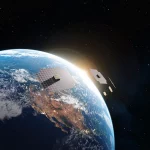

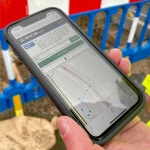


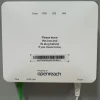








































I was at junior school when the first earth satellite, Sputnik, was launched. Now launches of multiple satellites in one go is hardly newsworthy! The technological advances in one lifetime have been absolutely amazing!
“Now launches of multiple satellites in one go is hardly newsworthy! ”
Did they not teach you to read when you were there? This is not about the amount launched. SL often does 40-50 at time but these ones are the first to allow an unmodified phone to connect to them for data and calls and SMS. This will end the expensive at phones and do more than the current Iphones can do when it comes to Emergency SMS via Satellite.
ignore the ILS guy, he’s a bit of a prick.
You misread his positive comment
O2 has a long running roaming agreement with the Thuraya satellite service, it actually works really well for SMS and voice but is very slow and very expensive for data.
How can you use this service though?
You put an O2 SIM card (must be contract type with roaming allowed) in a Thuraya handset, simples.
That is of course the catch, though, since the big benefit of these newer services is that they work with your existing Smartphone. No need to purchase an expensive second satellite phone, with fewer general “smart” features.
Yes absolutely, using a standard phone is a fantastic step forward.
Lots more “U.F.O” sightings by airline pilots, astronomers and assorted observers of the night sky ?
4G. USA only.
Big woop
First test messages have been sent / received on a few days after launch. I assume the sats aren’t in their final orbit as that normally takes a few weeks or longer to achieve.